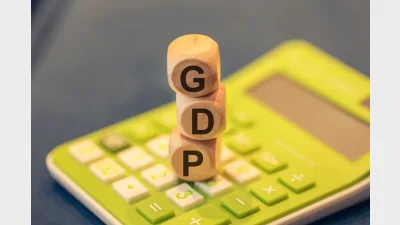Private market allocations help Future Fund hit record $224.9bn



Allocations to credit and hedge funds contributed to a strong performance in the 2024 financial year, according to Australia's sovereign wealth fund.
The Future Fund grew $18.8 billion in the last financial year to reach a record $224.9 billion, according to its latest portfolio update.
It delivered a 9.1 per cent annual return in the 12 months to 30 June 2024, which CEO Dr Raphael Arndt described as “very strong” given the challenging market environment.
Over the same time period, the S&P 500 Index returned 24.0 per cent in local currency terms while the S&P/ASX 200 returned 7.8 per cent.
“Equity markets rallied strongly over the year, thanks in large part to the strength of the US economy and expectations that US interest rates had peaked and would soon begin to fall,” Arndt said.
“Private credit and alternatives also delivered strong returns, as anticipated by our views that inflation and rates would remain higher and risk markets volatile.”
Future Fund’s chief investment officer (CIO), Ben Samild, added the last financial year remains one of the fund’s best ever years for alpha production in the portfolio.
The fund held a lower weighting, relative to its peers, in listed equities, which have been among the key drivers for returns in the financial year 2023–24, he observed.
“Given those initial portfolio settings, we’re very pleased to be able to generate the returns we generated,” Samild said.
Other key performers included hedge funds and credit, the CIO said.
As at 30 June 2024, the Future Fund held 15.2 per cent in alternatives, while 20.8 per cent of the portfolio was invested in developed market equities and 14.5 per cent in private equity.
Around 11 per cent was held in credit, including private credit.
Elaborating on the fund’s decision to lean into this space and up its allocation from around 8.6 per cent as at June 2023, Samild said the fund relied on “very compelling” data.
“We hold a mix of all sorts of credit in that portfolio. The main reason for the increase in allocation was a very significant investment into public high-grade credit around October,” Samild said.
On private credit, he added that the fund has been active in the space for over a decade having seen appealing risk-return opportunities.
Hedge funds, too, delivered “pretty strong positive returns”, Samild observed.
“Those returns were driven in a really broadly diverse way, so across quantitative managers and discretionary managers, across stock-picking equity managers … We wouldn’t expect that every year, it’s almost built for that not to happen, but we think the environment for skilled managers is a good one.
“They have more degrees of freedom, there’s much more dispersion … within interest rate markets, across currencies and equity markets, so you can more easily build a well-managed portfolio when you have more levers to pull,” he said.
The Future Fund’s latest update marks the first results since Greg Combet came on board to head the Future Fund Board of Guardians, taking the reins from long-standing chairman Peter Costello.
Commenting on the fund’s latest gains, Combet said the long-term investment success of the fund makes a “valuable contribution” to Australia’s financial standing.
“Since its establishment in 2006, investment returns have added almost $165 billion in value,” he said.
“My priority as chair is to maintain the focus on delivering the investment mandate of CPI plus 4–5 per cent per annum over the long term while managing risk.”
In taking up the role, Combet said he remains impressed with the fund’s investments in Australian infrastructure assets like airports, a major port, renewable energy, and telecommunications and data centres.
“These are important investments in Australia’s future,” Combet said.
“Building on these will be a priority for me, particularly given the investment opportunities in the energy transition.”
Commenting on this, Samild agreed that domestic private market investing, including infrastructure opportunities, comes with some “attractive portfolio features”.
“It has a direct link to our own inflation-based mandate and we hold in our own currency, which just makes it easier to build a portfolio around, so it’s already an attractive position,” he said.
“And we’re obviously based in Australia, so our market knowledge, we think, is reasonable, and sometimes, there are comparative advantages to being the frontrunner and investing domestically into your own economies from a consortium-partnership perspective. So there’s all sorts of reasons to do that.”
Recommended for you
Economic growth was weaker than expected, once again highlighting an economy largely sustained by population growth and government spending.
In this latest edition, Anna Shelley, CIO at AMP, shares the fund’s approach to current market conditions and where it continues to uncover key opportunities.
The mega fund has announced a $2.2 billion investment in a leading data centre platform, bringing its global real assets portfolio to nearly $60 billion.
In this latest edition, Australian Retirement Trust’s head of global real assets Michael Weaver explains the fund’s approach to finding new opportunities as it surpasses $300 billion in funds under management.













